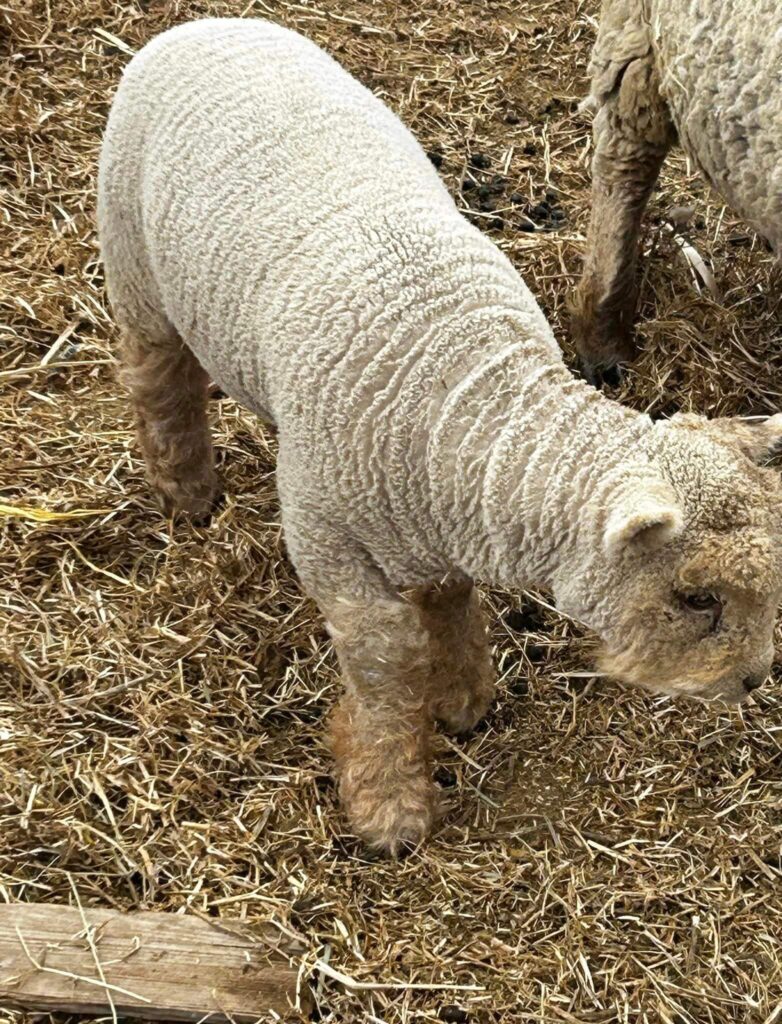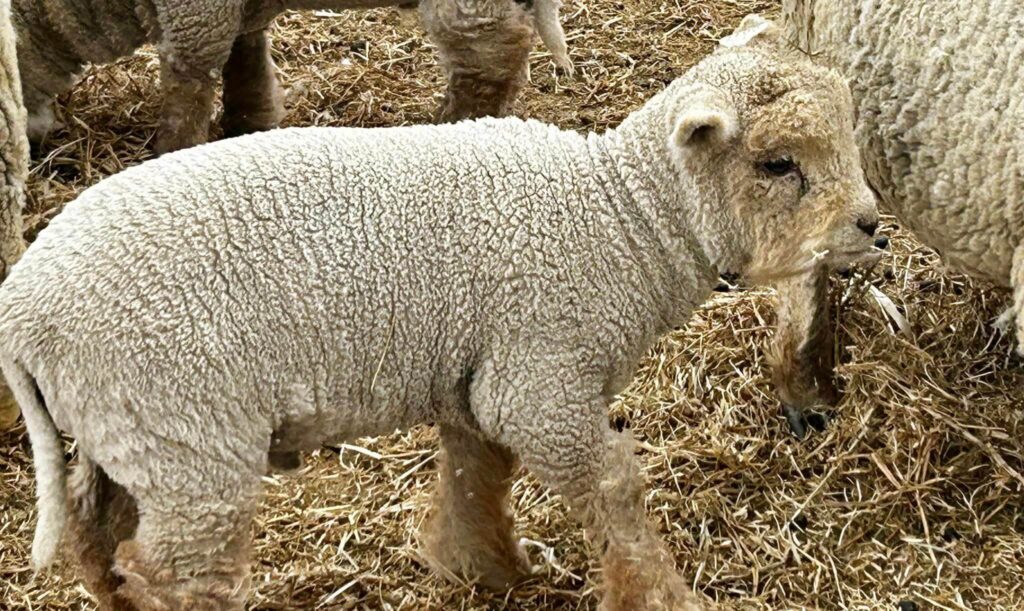Babydoll Ram Lamb
Babydoll Ram Lamb a diminutive yet robust breed, are gaining popularity among farmers and hobbyists alike. These adorable creatures, with their compact size and gentle demeanor, offer various benefits to their owners. In this article, we delve into the world of babydoll ram lambs, exploring their characteristics, benefits, care requirements, breeding considerations, marketing strategies, and future prospects.

Characteristics of Babydoll Ram Lambs
Size and Appearance
Babydoll Ram Lambs are renowned for their petite stature, standing at around 24 inches tall at the shoulder. Their compact build, coupled with a thick fleece coat, gives them a charmingly woolly appearance. Despite their small size, they possess a sturdy frame and exhibit excellent conformation.
Temperament
Known for their docile nature, babydoll ram lambs make ideal companions for both experienced shepherds and newcomers to sheep farming. Their friendly disposition and ease of handling make them suitable for interaction with children and other animals. Moreover, their calm temperament reduces stress during handling and management tasks.
Adaptability
One of the remarkable traits of babydoll ram lambs is their adaptability to various climates and environments. Whether in hot summers or cold winters, these hardy animals thrive with proper care and management. Their resilience to adverse conditions makes them a valuable addition to diverse farming operations.
Benefits of Raising Babydoll Ram Lambs
Wool Production
Despite their small size, babydoll ram lambs yield high-quality wool prized for its softness and warmth. Their fleece, consisting of fine fibers, is sought after by artisans and crafters for spinning, felting, and knitting purposes. Additionally, the wool’s natural insulation properties make it ideal for crafting cozy garments and accessories.
Land Management
Due to their petite stature and gentle grazing habits, babydoll ram lambs are excellent foragers and are proficient at maintaining pasture health. Their efficient grazing helps prevent overgrowth and weed proliferation, contributing to sustainable land management practices. Furthermore, their compact size reduces soil compaction, preserving the integrity of the pasture ecosystem.
Companionship
Beyond their practical benefits, babydoll ram lambs also provide emotional support and companionship to their owners. Their affectionate nature and endearing antics forge strong bonds with humans, fostering a sense of connection and well-being. For individuals seeking solace in rural living or therapeutic interactions, these gentle creatures offer invaluable companionship.
Housing and Care for Babydoll Ram Lambs
Shelter Requirements
When housing babydoll ram lambs, providing adequate shelter is essential for their well-being, especially during inclement weather. A sturdy, draft-free shelter with proper ventilation and insulation helps protect them from extreme temperatures and adverse weather conditions. Additionally, ample bedding material ensures comfort and cleanliness within the shelter.
Feeding and Nutrition
Maintaining a balanced diet is crucial for the health and growth of babydoll ram lambs. A diet rich in high-quality forage, supplemented with grain and mineral supplements as needed, supports optimal growth and development. Access to clean, fresh water at all times is essential to prevent dehydration and promote overall health.
Health Maintenance
Regular health checks and preventive care measures are vital for ensuring the well-being of babydoll ram lambs. Vaccinations, deworming, and parasite control protocols should be implemented according to a veterinarian’s recommendations. Additionally, monitoring for signs of illness or injury allows for prompt intervention and treatment, minimizing health risks.
Breeding and Reproduction
Breeding Considerations
When breeding babydoll ram lambs, selecting suitable breeding stock based on conformation, temperament, and genetic traits is paramount. Proper mating management, including ram selection and breeding timing, influences the success of the breeding program and the quality of offspring produced. Consulting with experienced breeders or agricultural specialists can provide valuable insights into breeding best practices.
Gestation Period
The gestation period for babydoll ram lambs typically ranges from 145 to 150 days, culminating in the birth of adorable lambs. During pregnancy, providing adequate nutrition and monitoring the ewe’s health are essential for ensuring a successful lambing process. Proper prenatal care helps minimize the risk of complications and promotes the health and vitality of newborn lambs.
Lambing Process
As the lambing season approaches, vigilant monitoring of pregnant ewes is necessary to detect signs of impending labor. Providing a clean, comfortable lambing environment with access to assistance if needed facilitates a smooth birthing process. Prompt intervention in cases of dystocia or complications ensures the safety of both the ewe and her offspring, enhancing overall lambing outcomes.
Marketing and Selling Babydoll Ram Lambs
Target Audience
Identifying the target audience for babydoll ram lambs is crucial for developing effective marketing strategies. Potential customers may include small-scale farmers, homesteaders, hobbyists, fiber enthusiasts, and pet owners seeking companion animals. Understanding the unique needs and preferences of each market segment allows for targeted advertising and personalized outreach efforts.
Pricing Strategies
Setting competitive yet fair prices for babydoll ram lambs requires consideration of various factors, including breed quality, pedigree, age, and market demand. Conducting market research to assess pricing trends and competitor pricing strategies helps determine optimal pricing levels. Offering value-added services or incentives, such as health guarantees or after-sales support, can enhance the perceived value of the lambs and justify premium pricing.
Advertisement Platforms
Utilizing diverse advertisement platforms expands the reach and visibility of babydoll ram lambs to potential buyers. Online marketplaces, social media platforms, agricultural forums, and local classified ads are effective channels for promoting available lambs and connecting with interested buyers. Engaging visual content, compelling descriptions, and clear contact information facilitate customer engagement and inquiries.

Challenges and Solutions in Raising Babydoll Ram Lambs
Predation Risks
Protecting babydoll ram lambs from predation requires implementing effective predator deterrent measures and securing the lambing environment. Installing sturdy fencing, using guardian animals such as livestock guardian dogs or llamas, and employing predator-proof housing designs help mitigate predation risks. Regular monitoring and vigilance are essential for promptly addressing any signs of predator activity.
Health Issues
Despite their hardiness, babydoll ram lambs are susceptible to various health issues, including parasitic infections, respiratory diseases, and nutritional disorders. Implementing proactive health management practices, such as vaccination protocols, deworming schedules, and dietary adjustments, helps prevent and manage common health concerns. Prompt veterinary intervention and disease surveillance further safeguard the health and well-being of the flock.
Market Fluctuations
Navigating market fluctuations and demand volatility poses challenges for babydoll ram lamb producers, impacting pricing, sales volumes, and profitability. Diversifying marketing channels, building customer relationships, and offering value-added services can help mitigate the effects of market instability. Additionally, maintaining flexibility and adaptability in production and sales strategies enables producers to respond effectively to changing market dynamics.
Future Prospects of Babydoll Ram Lamb Industry
The future of the babydoll ram lamb industry appears promising, driven by growing consumer demand for sustainable, ethically produced fiber products and companion animals. As awareness of the breed’s unique attributes and benefits continues to expand, so too does its market potential. By embracing innovation, adopting best practices, and fostering collaborative networks, stakeholders can contribute to the continued growth and success of the babydoll ram lamb industry.
Conclusion
In conclusion, babydoll ram lambs offer a myriad of benefits to farmers, homesteaders, and enthusiasts alike. From their charming appearance and gentle temperament to their practical utility in wool production and land management, these diminutive sheep embody versatility and resilience. By providing attentive care, implementing sound breeding and management practices, and leveraging effective marketing strategies, individuals can capitalize on the opportunities presented by the babydoll ram lamb industry.
Unique FAQs
Are babydoll ram lambs suitable for beginners in sheep farming?
Absolutely! Babydoll ram lambs are renowned for their docile nature and ease of handling, making them ideal for novice shepherds.
-
What is the lifespan of a babydoll ram lamb?
On average, babydoll ram lambs live for 10 to 12 years, provided they receive proper care and management.
-
Can babydoll ram lambs be raised in urban environments?
Yes, babydoll ram lambs adapt well to various environments, including urban settings, given adequate space and proper care.
-
Do babydoll ram lambs require shearing?
Yes, babydoll ram lambs need periodic shearing to remove their woolly fleece and maintain their health and comfort, especially in warmer climates.
-
Are there any specific dietary requirements for babydoll ram lambs?
Babydoll ram lambs thrive on a diet rich in high-quality forage, supplemented with grain and mineral supplements as needed. Consulting with a veterinarian or nutritionist can help tailor a suitable feeding regimen for optimal health and growth.